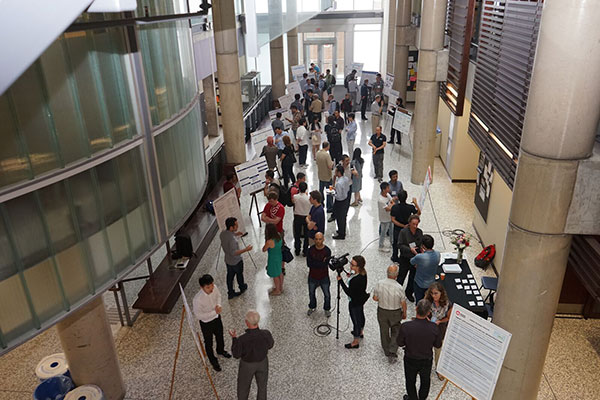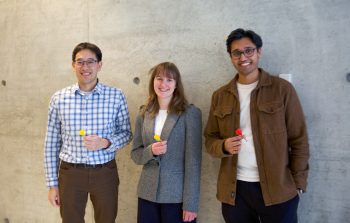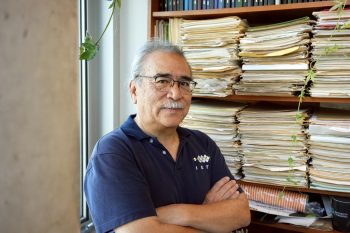If you live in Toronto, you may have noticed that your commute is worse since the HOV lanes opened ahead of Toronto’s Pan Am Games. Or is it all in your head?
The smart traffic monitoring platform Connected Vehicles and Smart Transportation (CVST) has the answer to that question, and many more that haven’t been asked yet.
Connected ‘smart’ cities are the future — robust real-time data delivered by a host of distributed sensors will help ease congestion, improve personal safety, increase energy efficiency and reduce waste across our utilities, transportation infrastructure and more.
CVST currently includes data from highway cameras, road incident alerts, road closures, transit systems, bike-sharing networks, border crossings — and experimentation with live feeds from a drone stationed at Downsview in Toronto. In this next year, Leon-Garcia has plans to integrate air-quality sensors that measure CO2 and humidity, data from weather stations, and data streams on pollution emissions.
“I think it’s clear that smart cities pose a very interesting area in terms of opportunities and challenges,” said Professor Alberto Leon-Garcia (ECE), scientific director of the SAVI research team. “The aim is to improve livability and sustainability, but when you look at those there are multiple dimensions — we need to take a layered view of smart cities.”
CVST is one of the applications built on the Smart Applications on Virtual Infrastructures (SAVI) Network testbed, a next-generation internet platform that investigates the convergence of cloud computing and software defined networking. SAVI’s chief architect, Hadi Bannazadeh (ECE) led the development of a national application platform testbed, and for the past two years researchers across the country have been building and testing applications to run on it.
SAVI, a national NSERC Strategic Network, includes researchers from 10 universities and over 100 graduate students. The group held its annual general meeting at the University of Toronto on Tuesday, July 7, preceded by a testbed workshop to share developments and areas of exploration and experimentation.
The topics of smart cities and big data analytics were top of mind at the meeting. Dragan Narandzic, chief technology officer at Ericsson Canada, delivered a keynote address about Ericsson’s approach to integrating ICT into infrastructure, and the investments necessary to do so.
“We believe that there are three categories that need to be addressed: city attractiveness, city competitiveness, and city sustainability,” said Narandzic. “We, as part of the ICT industry, have an obligation to find a way to make cities run more efficiently.”
Industry partners from TELUS, Ciena, Fortinet Inc., BTI Systems Inc. and many others were on hand. Between sessions, attendees heard poster presentations and demonstrations by more than two dozen graduate students from across Canada.
With the SAVI Network slated to wrap in August 2016, Leon-Garcia has both immediate goals and a broader vision for the future of the platform. “What I didn’t build into SAVI was a third tier, and those are the sensors,” he said. “That was not even part of the original plan, but it’s within reach so we’re doing it.”
In the SAVI-enabled future, you get answers before you even ask questions. And yes, your commute really is worse post-HOV lanes. The data proves it.




